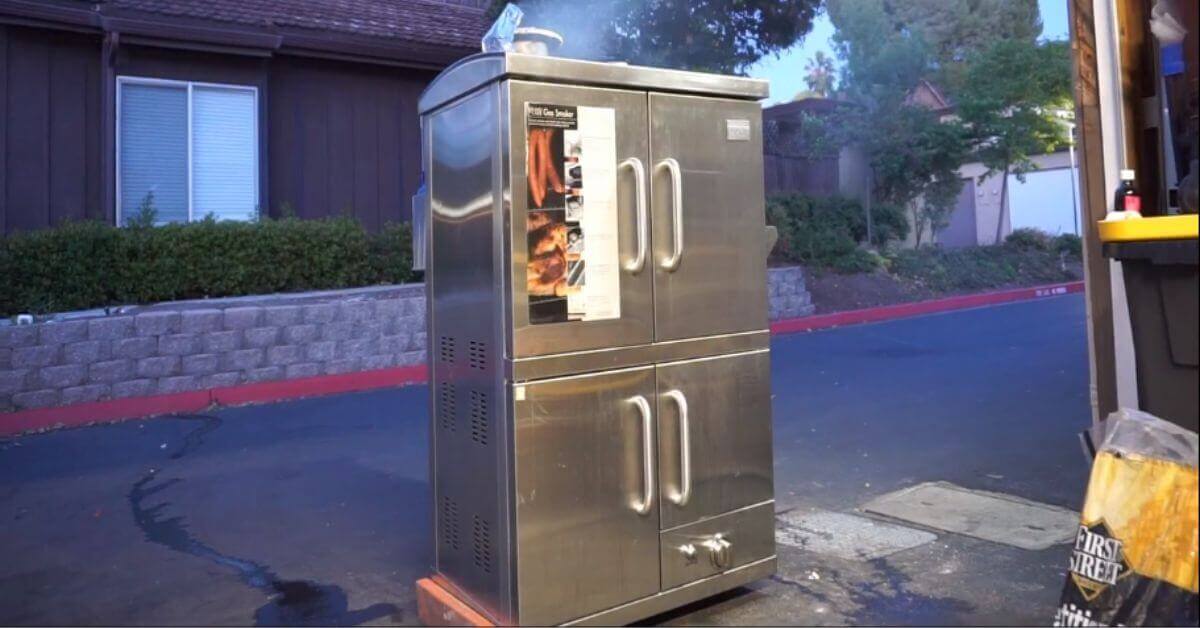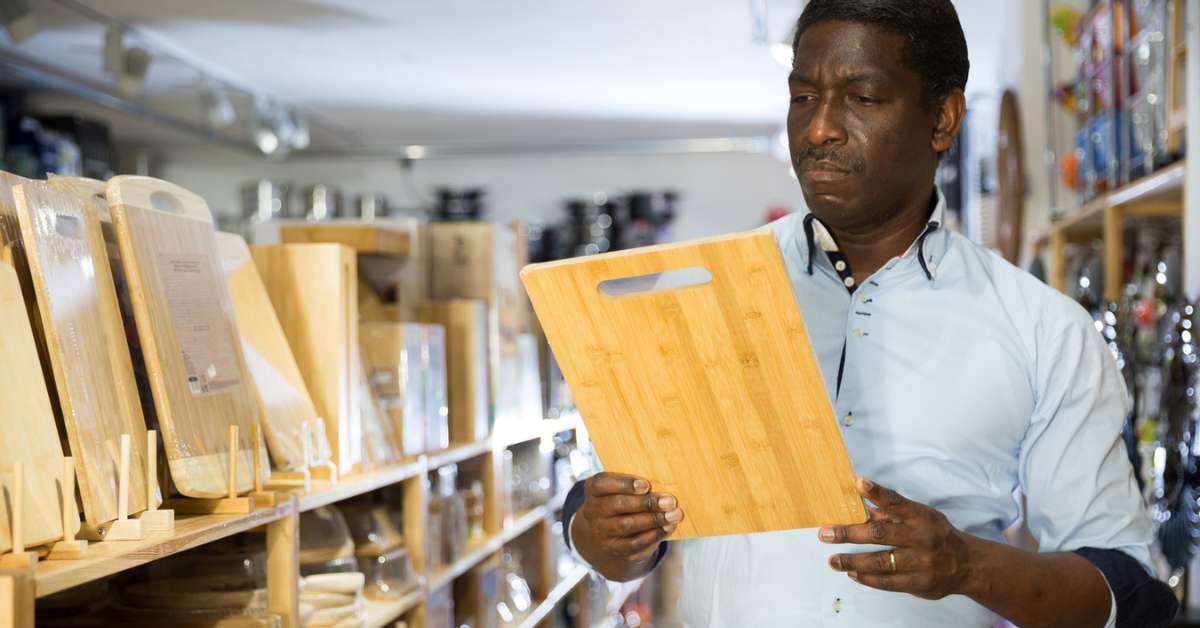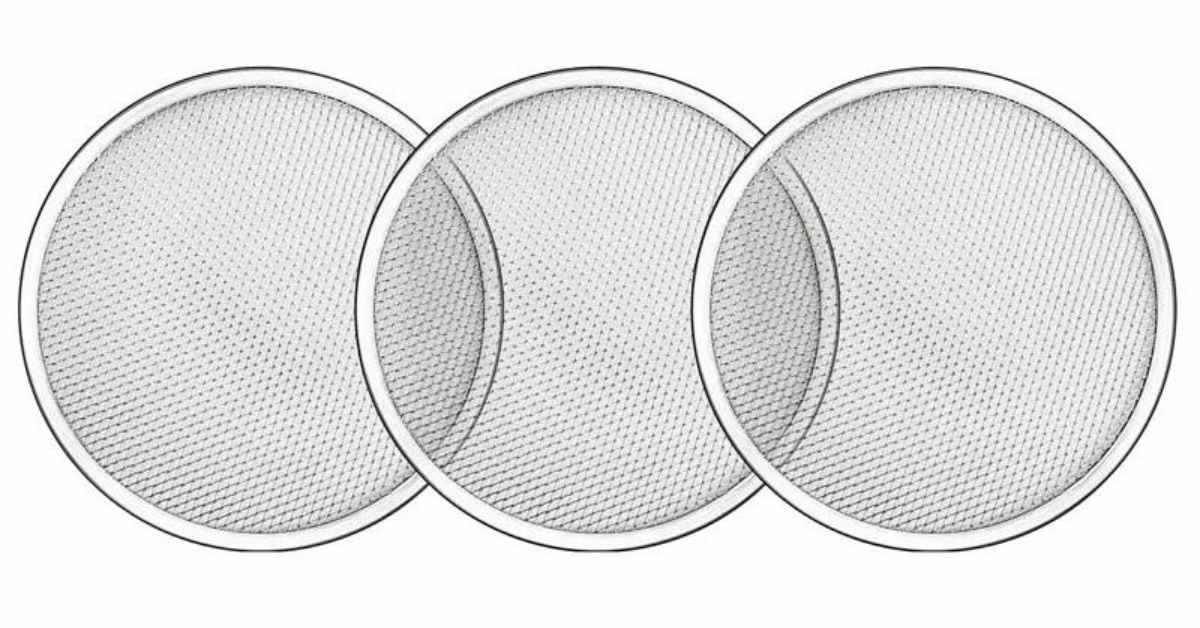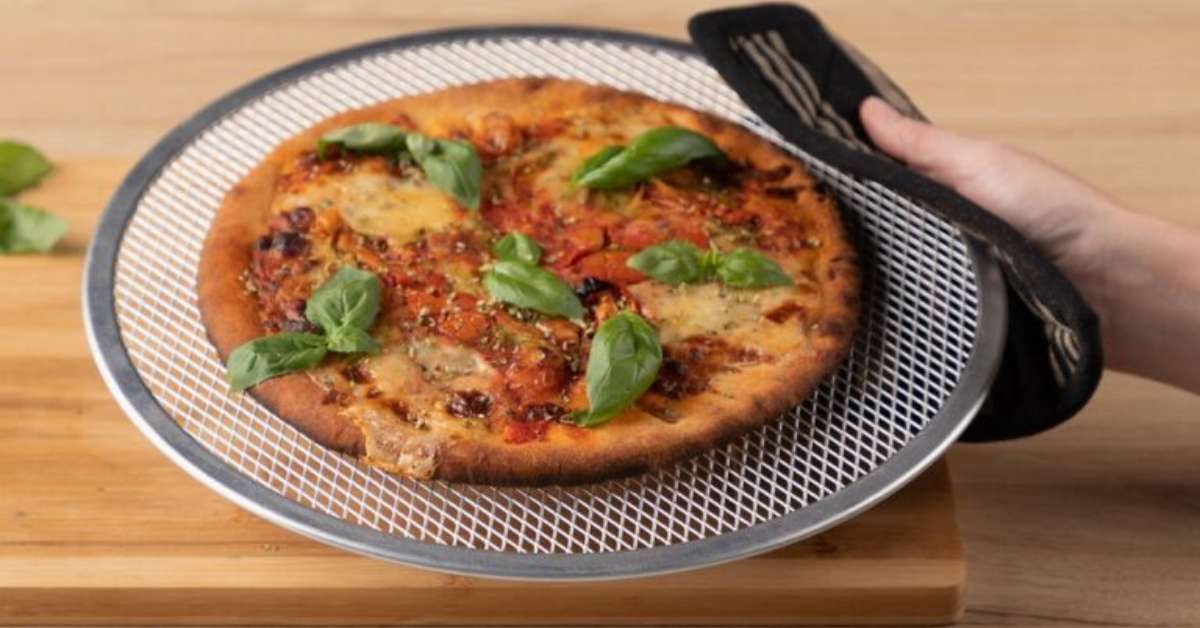Welcome to “The Ultimate Guide to Grand Cafe Smoker | Tips and Tricks 2023”! If you’re a barbecue enthusiast or love the aroma and flavors of smoked food, you’re in for a treat. In this comprehensive guide, we’ll explore everything you need to know about the Grand Cafe Smoker, a versatile and high-performance smoker that will take your culinary skills to new heights.
Whether you’re a seasoned pitmaster or just starting your smoking journey, this guide will provide valuable insights, expert tips, and tricks to help you achieve mouthwatering results. So, let’s fire up the smoker and dive into the world of delicious smoked delicacies!
Table of Contents
ToggleWhat Grand Cafe Smokers are
Grand Cafe Smokers are popular among barbecue enthusiasts and professional chefs. These smokers are designed to provide the perfect balance of convenience and flavor, allowing you to create delectable smoked dishes easily. The Grand Cafe Smoker is a versatile cooking appliance that combines smoke and low heat to infuse your food with incredible taste and tenderness.
These smokers come in various sizes and models, catering to different needs and preferences. Whether you’re looking for a compact smoker for your backyard or a larger one for catering events, Grand Cafe has various options. The smokers are constructed with high-quality materials, ensuring durability and longevity.
One of the key features of Grand Cafe Smokers is their ability to maintain a consistent temperature throughout the smoking process. This precision control allows you to achieve consistent results every time you smoke. Whether you’re slow-cooking a rack of ribs, smoking a whole turkey, or experimenting with vegetables and cheeses, the Grand Cafe Smoker provides the ideal environment to unleash your culinary creativity.
Their user-friendly design makes Grand Cafe Smokers suitable for beginners and experienced smokers. They often come equipped with intuitive controls, allowing you to easily adjust the temperature, set timers, and monitor the cooking progress. Some models even offer additional features like built-in thermometers and temperature probes, giving you further control over the smoking process.
Types of Grand Cafe Smokers
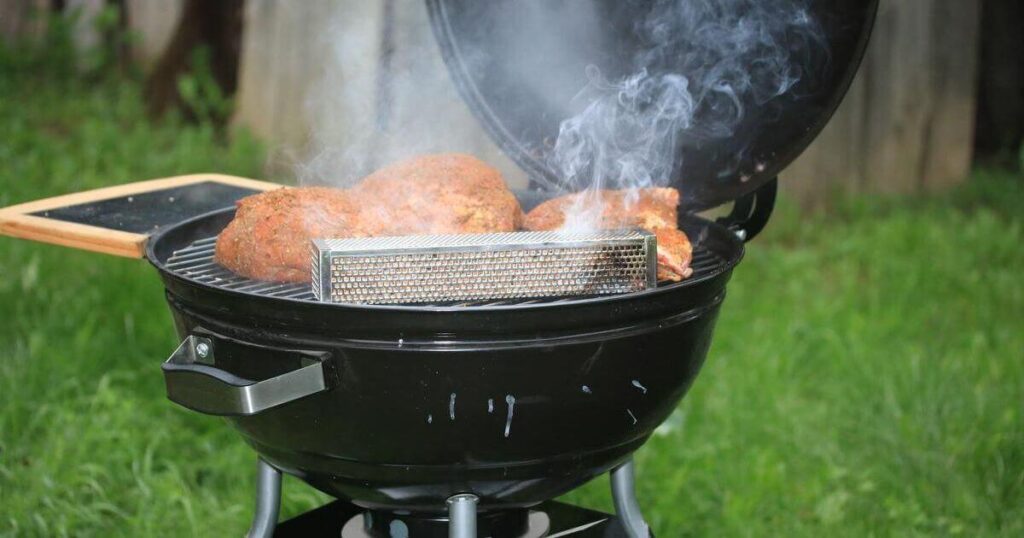
Regarding Grand Cafe Smokers, several types offer unique features and capabilities. Let’s explore the different types of Grand Cafe Smokers to help you choose the one that best suits your smoking needs.
Offset Smokers
Offset smokers, also known as barrel smokers or horizontal smokers, are a classic choice for barbecue enthusiasts. These smokers have a large cooking chamber and a separate firebox attached. The heat and smoke travel from the firebox into the cooking chamber, providing indirect heat for smoking. Offset smokers offer a traditional smoking experience and are ideal for smoking larger cuts of meat like brisket or whole racks of ribs.
Vertical Smokers
Vertical smokers, also referred to as bullet smokers or drum smokers, are another popular option. These smokers feature a tall, cylindrical design with multiple cooking racks stacked vertically. The heat source is located at the bottom, and the smoke circulates upward, enveloping the food for even smoking. Vertical smokers are known for their compact size, efficiency, and ease of use, making them a great choice for beginners or those with limited space.
Pellet Smokers
Pellet smokers, also called pellet grills, combine a smoker’s convenience with a grill’s versatility. These smokers use wood pellets as fuel, automatically fed into a fire pot by an electric auger system. Pellet smokers offer precise temperature control, allowing you to set the desired temperature and let the smoker do the rest. They are known for their ease of use, consistent heat, and the ability to add a distinct wood-fired flavor to your smoked dishes.
Electric Smokers
Electric smokers are an excellent option for those seeking convenience and simplicity. These smokers rely on electricity to generate heat and produce smoke. They often feature digital controls, allowing you to set the desired temperature and cooking time easily. Electric smokers are user-friendly and require minimal supervision, making them popular for beginners or those who prefer a set-it-and-forget-it approach.
Charcoal Smokers
Charcoal smokers are a classic choice for traditionalists who enjoy the authentic smoky flavor. These smokers use charcoal as the fuel source, providing a rich and aromatic smoke that infuses your food with incredible taste. Charcoal smokers come in various designs, including vertical water smokers, kettle smokers, and ceramic kamado-style smokers. They require more attention and skill but offer unmatched flavor and a rewarding smoking experience.
Each type of Grand Cafe Smoker has its advantages and considerations. Consider factors like size, fuel type, temperature control, and your personal preferences to determine the best type of smoker for your specific needs. With the right Grand Cafe Smoker in your arsenal, you’ll be well-equipped to create mouthwatering smoked dishes that will leave everyone craving more.
How to Choose a Grand Cafe Smoker: Factors to Consider
Choosing the Right Grand Cafe Smoker is essential to ensure a satisfying smoking experience and deliciously smoked dishes. Here are some key factors to consider when selecting your smoker:
Size and Capacity:
Determine the amount of food you plan to smoke regularly, and consider the available space in your backyard or cooking area. Smokers come in various sizes, from compact models for small families to larger ones for parties or gatherings. Ensure the smoker’s cooking capacity aligns with your needs to ensure the space is manageable.
Fuel Type:
Grand Cafe Smokers typically use different fuel sources, such as charcoal, wood pellets, or electricity. Consider your personal preferences and the flavor profile you want to achieve. Charcoal smokers provide that classic smoky taste, while pellet smokers offer convenience and versatility. Electric smokers are easy to use, and they require minimal monitoring. Choose the fuel type that suits your cooking style and desired flavor.
Temperature Control:
Consistent temperature control is crucial for successful smoking. Look for smokers with reliable temperature control mechanisms, such as adjustable vents, built-in thermometers, or digital control panels. Precise temperature control ensures that your food cooks evenly and retains moisture, resulting in mouthwatering smoked dishes.
Build Quality and Durability:
A well-built smoker is a long-term investment. Consider the construction materials and overall build quality of the smoker. Look for smokers made from sturdy materials that can withstand high temperatures and harsh weather conditions. Stainless and heavy-gauge steel are commonly used for durability and heat retention properties.
Ease of Use:
If you’re a beginner or prefer a hassle-free smoking experience, opt for a user-friendly and easy-to-operate smoker. Features like convenient loading and ash removal systems, intuitive controls, and easy-to-read displays can greatly enhance your smoking experience. Consider smokers with features that simplify the smoking process and reduce the learning curve.
Additional Features:
Some smokers offer extra features that can enhance your cooking experience. These may include side tables for food preparation, integrated meat probes for monitoring internal temperatures, or even Bluetooth or Wi-Fi connectivity for remote temperature control and monitoring. Assess the additional features and determine which ones suit your needs and preferences.
Budget:
Set a budget for your smoker purchase. Smokers come in a wide price range, so it’s essential to determine how much you’re willing to invest. While higher-end models may offer more advanced features, budget-friendly options deliver excellent results. Consider the value and features provided by the smoker within your budget range.
How to Set up a Grand Cafe Smoker
Setting up your Grand Cafe Smoker correctly is crucial for achieving optimal smoking results. Follow these steps to ensure a proper setup:
- Choose the Right Location: Select a suitable location for your smoker. Ensure it is placed on a stable surface away from flammable materials, such as dry grass or overhanging branches. Adequate ventilation is important, so avoid placing the smoker in an enclosed or poorly ventilated area.
- Assemble the Smoker: If your Grand Cafe Smoker requires assembly, carefully follow the manufacturer’s instructions to put it together. Ensure all parts are securely attached and any connections, such as hoses or vents, are properly fitted.
- Prepare the Cooking Chamber: Clean the cooking chamber of your smoker before use. Remove any packaging materials, stickers, or protective coatings. Wipe down the interior with a damp cloth to remove any residue or debris.
- Choose the Fuel: Depending on your smoker’s fuel type, select the appropriate fuel, such as charcoal, wood pellets, or electricity. Follow the manufacturer’s recommendations regarding the type and quantity of fuel to use.
- Preheat the Smoker: Before adding the food, preheat the smoker to the desired temperature. Follow the specific instructions provided with your smoker to achieve the desired heat level. This preheating process helps burn off any residues from the manufacturing process and ensures a stable cooking environment.
- Add Smoking Wood or Pellets: If you want to infuse your food with a smoky flavor, add smoking wood chips, chunks or pellets to the designated area of your smoker. Different types of wood will produce distinct flavors, so choose according to your taste preferences. Soak wood chips in water for about 30 minutes before using them to generate more smoke.
- Control the Airflow: Proper airflow is essential for maintaining the desired temperature inside the smoker. Adjust the air vents or dampers according to the manufacturer’s instructions to control the amount of oxygen entering the smoker. Opening the vents allows more oxygen and increases the heat while closing them reduces the airflow and temperature.
- Place the Food: Once the smoker has reached the desired temperature and smoke is being produced, it’s time to place your food on the cooking grates. Arrange the food evenly, leaving enough space for the smoke to circulate each piece. Close the smoker’s lid to trap the heat and smoke inside.
- Monitor and Maintain Temperature: Keep an eye on the smoker’s temperature throughout the cooking process. Use a built-in thermometer or external probe thermometer to maintain the desired temperature. Adjust the vents or dampers as needed to maintain a consistent temperature.
- Allow for Proper Cooking Time: Different foods require different cooking times. Consult recipes or smoking guides for specific cooking durations. Avoid opening the smoker’s lid frequently, which can cause temperature fluctuations and increase cooking time.
- Ensure Food Safety: Practice proper food safety measures while smoking. Use a food thermometer to check the internal temperature of the meat to ensure it reaches the recommended safe levels. Follow the guidelines for safely handling, marinating, and resting smoked food.
Following these steps, you can set up your Grand Cafe Smoker properly and begin your smoking journey confidently. Enjoy the process as you create mouthwatering smoked dishes that will tantalize your taste buds.
You can also read the following: The Ultimate Kitchen Showdown: Rondeau vs Saute Pan
Smoking Techniques with Grand Cafe Smokers
Mastering different smoking techniques can take your culinary skills to new heights and elevate the flavors of your smoked dishes. Here are some popular smoking techniques you can employ with your Grand Cafe Smoker:
Low and Slow:
The low and slow technique is a classic approach to smoking that involves cooking food at a low temperature over a longer period. This technique is ideal for larger cuts of meat like brisket, pork shoulder, or ribs. Set your Grand Cafe Smoker to a low temperature, typically between 225°F (107°C) and 275°F (135°C), and allow the meat to slowly cook, absorbing the smoky flavors while becoming tender and juicy.
Hot and Fast:
While low and slow is traditional, hot and fast smoking is gaining popularity. This technique involves smoking at higher temperatures, usually around 300°F (149°C) to 350°F (177°C). It reduces the cooking time while infusing the food with smoky flavors. Hot and fast smoking works well for smaller cuts of meat like chicken pieces or fish fillets, providing a crispier exterior while retaining moisture.
Indirect Smoking:
Indirect smoking is a technique that involves placing the food away from the direct heat source in the smoker. This method creates a more gentle cooking environment, allowing the smoke to envelop the food and impart a rich smoky flavor. It’s commonly used for larger cuts of meat or delicate items that require longer cooking times.
Adding Wood Chips or Pellets:
To enhance the smoky flavor of your dishes, you can add wood chips or pellets to your Grand Cafe Smoker. Soak wood chips in water for 30 minutes before use to generate more smoke. For pellet smokers, load the hopper with the desired wood pellets. Experiment with different types of wood, such as hickory, mesquite, apple, or cherry, to create unique and flavorful combinations.
Mopping and Basting:
Mopping or basting is applying a liquid mixture to the food during smoking. This technique helps to add moisture and flavor while enhancing the appearance of the food. Create a flavorful mop or basting sauce using ingredients like apple cider vinegar, apple juice, spices, and herbs. Regularly brush the food with the sauce to keep it moist and enhance the flavor profile.
Reverse Searing:
Reverse searing is often used for smoking thicker cuts of meat like steaks or roasts. It involves smoking the meat at a low temperature until it reaches an internal temperature below the desired doneness. Then, transfer the meat to a hot grill or skillet to sear and develop a flavorful crust. This technique combines the smoky flavors from the smoker with the appealing charred exterior from the sear.
Cold Smoking:
Cold smoking is a technique used for foods that benefit from extended exposure to smoke without intense heat. This method is commonly used for cheese, bacon, or fish. The cold smoke is generated in a separate smoke generator and directed into the smoking chamber of the Grand Cafe Smoker. Ensure the temperature remains below 90°F (32°C) to prevent food from cooking.
Smoking Different Foods with Grand Cafe Smokers
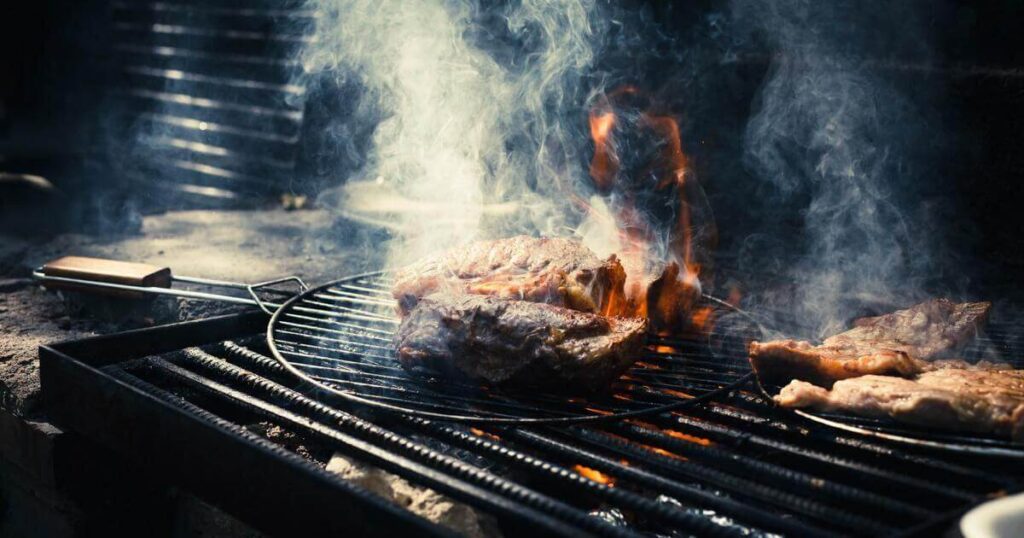
One of the joys of owning a Grand Cafe Smoker is its versatility in smoking a wide range of foods. Here are some popular foods you can smoke to perfection using your Grand Cafe Smoker:
Meats: Smoking meats is a classic choice and a favorite among barbecue enthusiasts. Whether it’s brisket, ribs, pork shoulder, chicken, or even game meats like venison, smoking imparts a delightful smoky flavor while keeping the meat tender and juicy. Experiment with different rubs, marinades, and wood flavors to create unique taste profiles.
Fish and Seafood: Smoking fish and seafood adds a distinctive smoky flavor and enhances their natural taste. Salmon, trout, shrimp, and scallops are popular choices for smoking. The low and slow method works well for delicate fish, while heartier fish can handle hotter temperatures. Use a cedar plank or a grilling basket to prevent the fish from sticking to the grates.
Cheese: Smoking cheese can take its flavor to a whole new level. Hard cheeses like cheddar, gouda, or provolone are commonly smoked. The cold smoking technique is ideal for cheese, imparting a smoky flavor without melting or altering the texture. Place the cheese on a cold rack and let it smoke for several hours. The longer the smoking time, the stronger the smoky flavor.
Vegetables: Smoking vegetables adds a unique twist to your vegetarian dishes. Bell peppers, eggplant, zucchini, and mushrooms are great options for smoking. The smoky flavor complements their sweetness and adds depth to salads, sandwiches, or side dishes. Toss the vegetables in a light marinade or brush them with oil before placing them in the smoker.
Nuts: Smoking nuts can create a delightful snack with a smoky crunch. Almonds, pecans, or cashews can be lightly tossed in oil or spices and then smoked for a short duration. The gentle heat of the smoker infuses the nuts with a subtle smoky flavor, making them perfect for snacking or adding to salads and baked goods.
Fruits: Smoking fruits can add a unique twist to sweet and savory dishes. Apples, peaches, or pineapples can be sliced and smoked to enhance their natural sweetness. Smoked fruits can be used in salads, desserts, or even grilled meats for a delicious contrast of flavors.
Bread: Yes, you can even smoke bread! Smoking bread can infuse it with a delicate smoky flavor that pairs well with various dishes. Buns, baguettes, or flatbreads can be placed in the smoker briefly to impart a hint of smokiness. Enjoy the smoked bread or use it to create flavorful sandwiches or crostini.
When Using a Grand Cafe Smoker – Common Mistakes to Avoid
Using a Grand Cafe Smoker can be a rewarding experience. Still, it’s important to avoid common pitfalls affecting your smoking results. Here are some mistakes to avoid when using your smoker:
Neglecting to Preseason Your Smoker: Before your first use, it’s crucial to preseason your Grand Cafe Smoker. This process helps burn off residual manufacturing oils, removes unpleasant odors, and prepares the smoker for optimal performance. Follow the manufacturer’s instructions to properly season your smoker before diving into your smoking adventures.
Skipping the Preheating Step: Preheating your smoker is essential for achieving consistent cooking temperatures. Some beginners may be tempted to rush the process and skip preheating, leading to unstable temperatures and uneven cooking. Always preheat your smoker to the desired temperature before adding your food to ensure accurate cooking times and optimal results.
Overloading the Smoker: It’s tempting to fill your smoker with as much food as possible, especially when cooking for a crowd. However, overcrowding the smoker can impede the airflow, hinder smoke circulation, and lead to uneven cooking. Allow enough space between food items to ensure proper smoke penetration and promote even heat distribution.
Neglecting Temperature Monitoring: Monitoring the temperature of your smoker is crucial for consistent and successful smoking. Many smokers come with built-in thermometers, but it’s recommended to use an additional probe thermometer to monitor the internal temperature of your food accurately. Avoid relying solely on visual cues and use proper temperature monitoring tools for optimal results.
Constantly Opening the Smoker Lid: While checking on your food frequently is tempting, constantly opening the smoker lid can disrupt the cooking process. Each time you open the lid, you release heat and smoke, resulting in temperature fluctuations and extended cooking times. Trust the process and limit lid openings when necessary, such as adding wood chips or checking for doneness.
Using Damp or Green Wood: Using damp or green wood can produce excessive smoke and create an unpleasant flavor in your smoked dishes. Using properly seasoned and dry wood chips, chunks, or pellets is important. Soak wood chips in water for 30 minutes before use to generate a consistent and clean smoke.
Not Allowing Enough Resting Time: Resting your smoked food after it’s cooked is crucial for allowing the flavors to develop and the juices to redistribute. Avoid immediately digging into your food as soon as it’s done. Instead, let it rest for a few minutes to ensure a moist and flavorful outcome.
How to Clean and Maintain Your Grand Cafe Smoker
Proper cleaning and maintenance are essential for optimal performance, longevity, and food safety. Follow these steps to keep your smoker in excellent condition:
Allow the Smoker to Cool Down: After each use, let your Grand Cafe Smoker cool down completely before cleaning. This ensures your safety and prevents any accidental burns.
Remove Ashes and Debris: Once the smoker is cool, remove any ashes and debris from
the firebox and the bottom of the smoker. Use a brush or a vacuum specifically designed for removal to clean out the ash and residue. Dispose of the ashes properly according to local regulations.
Clean the Cooking Grates: The cooking grates should be cleaned after each use to prevent the buildup of food particles and grease. Use a grill brush or a sponge to scrub the grates thoroughly, removing any residue. For stubborn residue, you can soak the grates in warm, soapy water and scrub them gently.
Wash the interior Surfaces: Wipe down the interior surfaces of the smoker with a damp cloth or sponge. Use mild soap and water to remove grease or residue accumulated during cooking. Avoid harsh chemicals or abrasive cleaners that could damage the smoker’s surfaces.
Clean the Exterior: Clean the exterior of your Grand Cafe Smoker with a mixture of mild soap and warm water. Use a sponge or a soft cloth to gently wipe down the exterior surfaces, removing grease or stains. Rinse with clean water and dry thoroughly.
Check and Clean the Vents: Inspect the vents of your smoker for any obstructions or buildup. Clean the vents using a brush or a cloth to ensure proper airflow during smoking sessions. Ensure the vents are clear of any debris that could affect temperature control.
Inspect and Clean the Burner: If your Grand Cafe Smoker has a gas burner, inspect it for clogs or blockages. Follow the manufacturer’s instructions to clean the burner properly. Remove any accumulated grease or debris that could interfere with the burner’s performance.
Store Properly: Store your Grand Cafe Smoker in a dry and protected area when unused. Use a cover designed for your smoker to protect it from the elements, if possible. Ensure the smoker is completely dry before covering it to prevent mold or mildew growth.
Regular Maintenance: Periodically inspect all parts of your smoker, including hoses, seals, and connections. Replace any worn-out or damaged components as needed. Refer to the manufacturer’s instructions for specific maintenance guidelines and recommended intervals.
Conclusion
In this comprehensive guide, we have explored the world of Grand Cafe Smokers, providing valuable tips and tricks for successful smoking sessions. We discussed what Grand Cafe Smokers are, the different types available, factors to consider when choosing one, and how to set it up properly. We also explored various smoking techniques, including low and slow, hot and fast, indirect smoking, and more.
Additionally, we explored the wide array of foods you can smoke with your Grand Cafe Smoker, from meats and seafood to cheese, vegetables, and even bread. We highlighted common mistakes to avoid and emphasized the importance of proper cleaning and maintenance to keep your smoker in excellent condition. With this knowledge, you can confidently embark on your smoking adventures, impressing family and friends with delicious, smoky creations. So fire up your Grand Cafe Smoker, embrace the art of smoking, and savor the incredible flavors that await you. Happy smoking!
FAQs
How long does it take to smoke meat in a Grand Cafe Smoker?
The smoking time for meat in a Grand Cafe Smoker can vary depending on the type and size of the meat, as well as the desired level of doneness. As a general guideline, low and slow smoking at a temperature of around 225-250°F (107-121°C) can take anywhere from a few hours to several hours, depending on the cut of meat.
How often should I clean my Grand Cafe Smoker?
Regular cleaning is essential to maintain the performance and longevity of your Grand Cafe Smoker. It’s recommended to clean your smoker after each use to remove any residue or buildup. Additionally, conduct a more thorough cleaning periodically, especially for the cooking grates, vents, and other components.
Can I use my Grand Cafe Smoker in cold weather?
Yes, you can use your Grand Cafe Smoker in cold weather. However, remember that colder temperatures can affect cooking time and temperature regulation. It’s important to monitor your smoker closely and adjust as needed to ensure consistent cooking.
What’s the best type of wood to use for smoking?
Choosing wood for smoking depends on personal preference and the flavor profile you want to achieve. Popular wood options for smoking include hickory, mesquite, apple, cherry, oak, and maple. Each type of wood imparts a distinct flavor, so feel free to experiment and find your favorite combinations.
Can I smoke food without bringing or marinating it first?
While brining or marinating can enhance the flavor and tenderness of the food, it’s not always necessary to brine or marinate before smoking. Some foods, such as certain cuts of meat or vegetables, can still be smoked and yield delicious results without prior bringing or marinating. However, marinating or seasoning the food before smoking can add an extra layer of flavor and juiciness.

